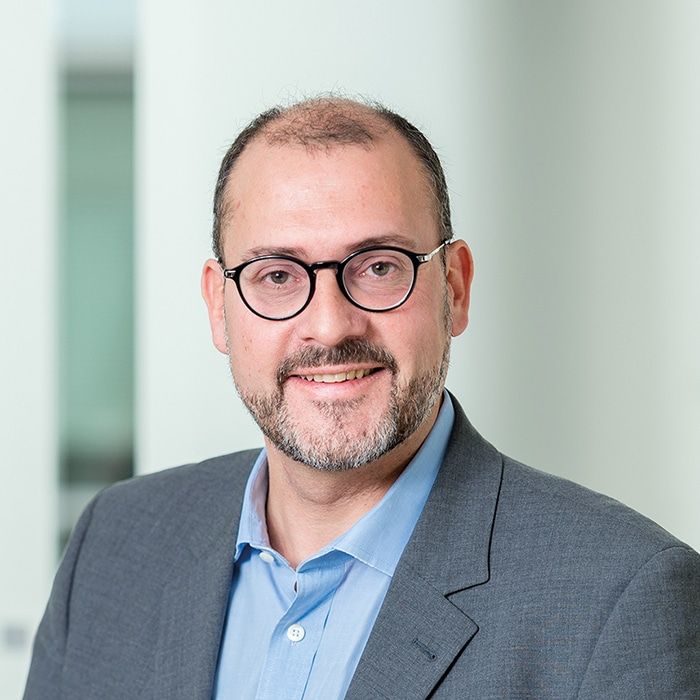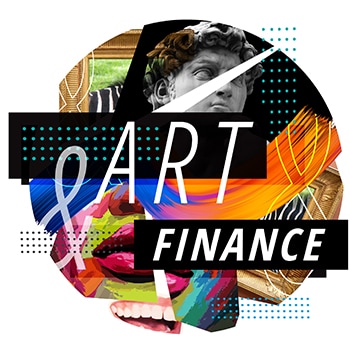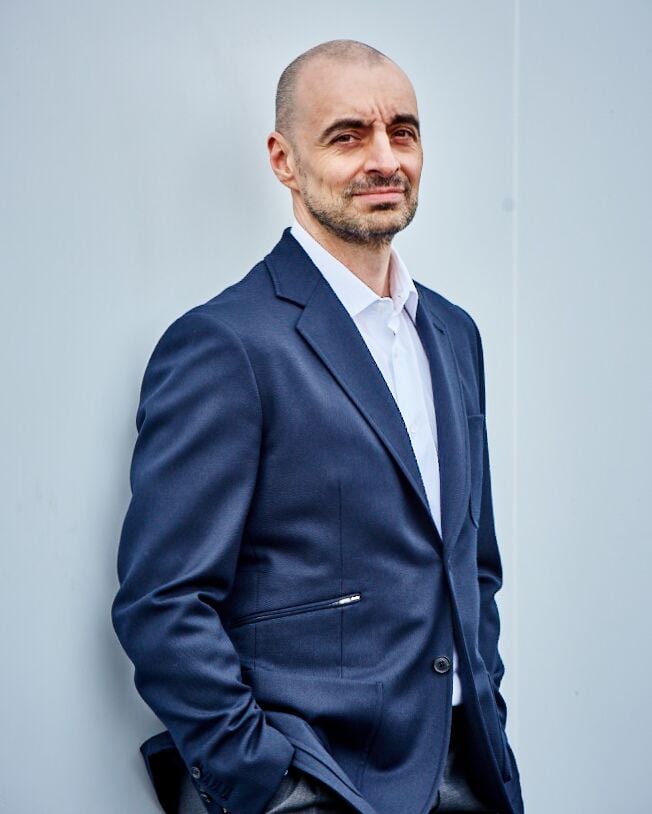‘Culture Is Increasingly Perceived as an Economic Force’: Deloitte’s Adriano Picinati di Torcello on Art and Finance


Artnet Gallery Network

Adriano Picinati di Torcello is an art and finance director of Deloitte and co-authored the 2017 Art & Finance Report, which was jointly published by Deloitte and ArtTactic. The Luxembourg-based has over twenty years of experience in the business. Recently, he sat down with Ulvi Kasimov, the founder of .ART, to discuss the melding of art and finance.
How do you define art and finance?
It’s the combination of three sectors. The first comprises stakeholders in the art and wealth management world such as wealth managers, private banking, insurance companies and ultra high net-worth individuals (UHNWIs).
The second sector is the art business sphere where you have auction houses, galleries and art fairs, art-tech companies and so on – especially in the digital environment – such as Dot Art, who are trying to disrupt the market.
Thirdly you have the cultural sector with private, public and corporate museums and in which regions and even countries are looking at art as a source of economic diversification. Culture is part of their “soft power”: they are trying to increase the social impact of their cultural institutions and measure that.
What are you trying to achieve across these three sectors?
We are trying to create unity and interaction among these three sectors because they tend to work in silos. By stepping up the dialogue—and by knowing the pain points and the services that each of them has developed—we can increase the connections between them. Our role is to provide our consulting, tax, and audit services to the stakeholders in these sectors. What we don’t do is get involved in the transactions.

Adriano Picinati di Torcello is the director of Deloitte’s Art & Finance department.
What are the trends in the wealth management side of the art world?
When dealing with ultra high net-worth individuals you need to develop a holistic advisory relationship with them, meaning you need a strategy for their total wealth. You should include “collectible items” in the discussion with your client covering art and the rest. There’s more and more money allocated to these kinds of collectibles so there’s both a responsibility and an opportunity to include them in a range of wealth management services.
What is happening in the “art business” side of auction houses and art fairs?
Technology has developed very rapidly in many different fields. We’re talking about augmented reality, artificial intelligence, big data, blockchain, ultra-high-resolution screens, 3D, and virtualization—this all applies in the art world. It has many implications such as the creation of new types of artwork, global reach, and transparency and trust. You can offer a new kind of experience, online and offline.
What are the trends in the “cultural sector” side; museums and galleries and the like?
For instance, you have the increasing development of private museums that is increasing competition between private and public museums. We also have global competition between countries to develop the best cultural offering. Culture is increasingly perceived as an economic force and part of the soft power of a nation. We’ve all heard about the Louvre Abu Dhabi for example; no museum like this existed in the Middle East until recently. It’s already creating an impact.
How can you measure the social impact of a public museum or gallery?
Deloitte Bilbao has developed the Deloitte Global Impact Model for Cultural Institutions. Since we’re trying to understand the impact of cultural projects, we use a model to link economic results and social results. Above all, we are required to capture actual, rather than theoretical, contributions. We have started to roll out the model with museums, theatres, and opera houses. These organizations are pleased to have these tools but you need to accompany them with a shift in mentality.
Can you give me an example of how the tool works?
Intangible “social benefits” are not normally included in organizations’ activity reporting. It’s increasingly essential to identify both the short-term and long-term economic and social contributions to demonstrate the impact cultural institutions generate to justify their budget, as well as to attract potential donors. It is also important to build up assumptions about the ways in which new social contributions can be made. If we are aware of the power we have to influence society – defined as soft power – and have the means to evaluate this, we can contribute to the evolution of our community. This is a key to success.

Ulvi Kasimov, founder of .Art. Photo: Photo: Philip Sinden, courtesy of .ART.
Do you think the art market is becoming more democratic and open?
When you look at the transformation of the art sector now: the globalization of art centers; the number of art fairs and their number of visitors; the increasing number of museums; the development of online tools to reach, share, and experience art without borders, I think we can reasonably say yes, art is touching more and more people globally and there is democratization to access art. The new generations are also heavily interested in art. They live in a connected world surrounded by images and have a different approach regarding how to experience life. You also have the development of culture citizenship where art is associated with brands. Competition between auction houses and between galleries – something that was kind of a closed shop – is starting to become more open but the high end of the market is still dominated by the traditional players. It is a market in transition and we are at the beginning of the transformation.
Some people think applying business practices to the art world sullies it in some way. What do you think?
First, the art business sector is a business and as in any business sector, once you reach a certain size you have to adapt your business practices to accompany the growth and the needs of the market. If we focus on the cultural sector, it also must adapt to a new reality where incorporating some business practices could make sense. Otherwise, and I’m not sure I would call it a business practice, but with the money involved, most buyers will perform sound due diligence.
Let’s say you spent €5,000, €10,000, €100,000, or more on a piece of art. What would your reaction be if we just gave you some qualitative information regarding the artwork? Would that be enough? For some purely emotional collectors, who just love an artwork, they may not question the price. However, the majority, if they buy a house or a car or any other item of high value, will consider both the emotional and the financial side. So the emotional component is relevant but they don’t want to be a fool either. They want to be sure that this is an authentic and genuine artwork but also that the money is wisely spent and that the person they are dealing with is trustworthy.
What could public cultural institutions learn from the business world? Is there an opportunity to subsidize operations by releasing the value of their collections in a more sophisticated way?
Now you’ve opened a really interesting door. Museums that have collections of great value currently keep the monetary value for themselves, so it’s not really leveraged or shared. Could we think of a model where they shared the ownership of the collections? Let’s say they keep majority control; they keep showing and maintaining the works so investors know that everything is properly managed by experts, but in fact, ownership is shared to a certain extent and the museum has more money to support its cultural objectives. Could that approach be considered “social investing”? I think it is a debate to open, especially if it can support a government to have a more impactful cultural sector.
So we’re talking about issuing shares on a stock market?
Not necessarily on a stock market. It is just an idea that has to be tested. But if you “securitize” the collection or some of the works, the shares should be tradable in one way or another. If someone wants to sell those shares at some point, they have to be able to do it. As said before, this approach is more of a social impact investment. Normally, over the long term, good collections increase in value at a moderate rate, so you’re most likely not going to lose money and you may even generate a little bit of a return. For those who are looking for long-term investment opportunities such as pension funds, it could be appealing. The cultural world is not ready for that now but I’m convinced that new models will emerge in the long term where the public and the private sectors will combine forces to support an even more vibrant cultural sector.
Can you give me an example of where this idea has been explored?
To my knowledge, this has never been explored. But we can take the case of the city of Detroit that was in financial trouble and at one point they considered selling the collections of the Detroit Institute of Arts to repay loans. Instead of pursuing that option, could they have considered securitizing the collection and sharing ownership while keeping the majority of its ownership with a group of investors? In the end, they didn’t sell because they managed to find a solution elsewhere, but I’m wondering if there’s a model of co-ownership of cultural collections for those looking for long-term, stable investments in a social investment context. Currently, we have private and public museums that co-existed; could we have private-public museums?
This interview is excerpted from Kasimov’s book The Art of the Possible, a series of interviews that explore the ways Internet technology can remake the art world. Additional interviews from the book will be published here in the coming months